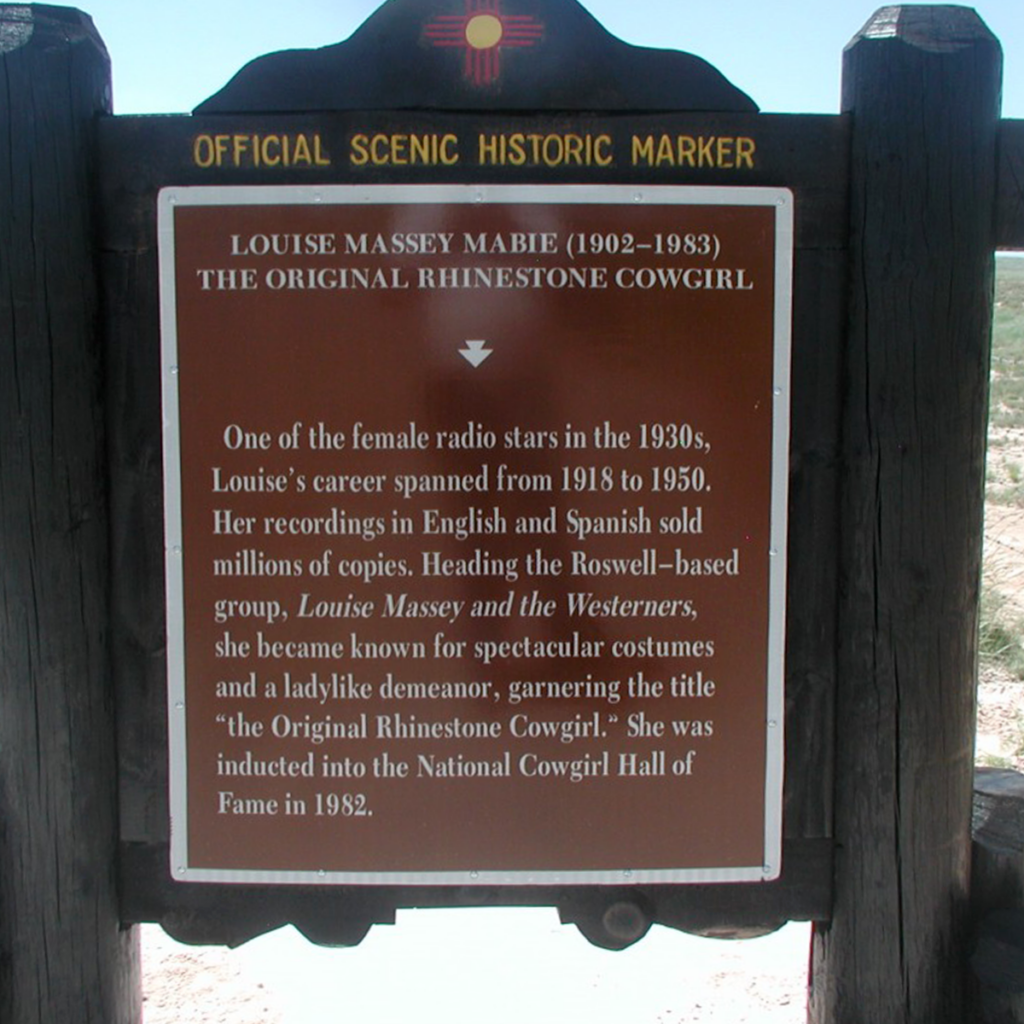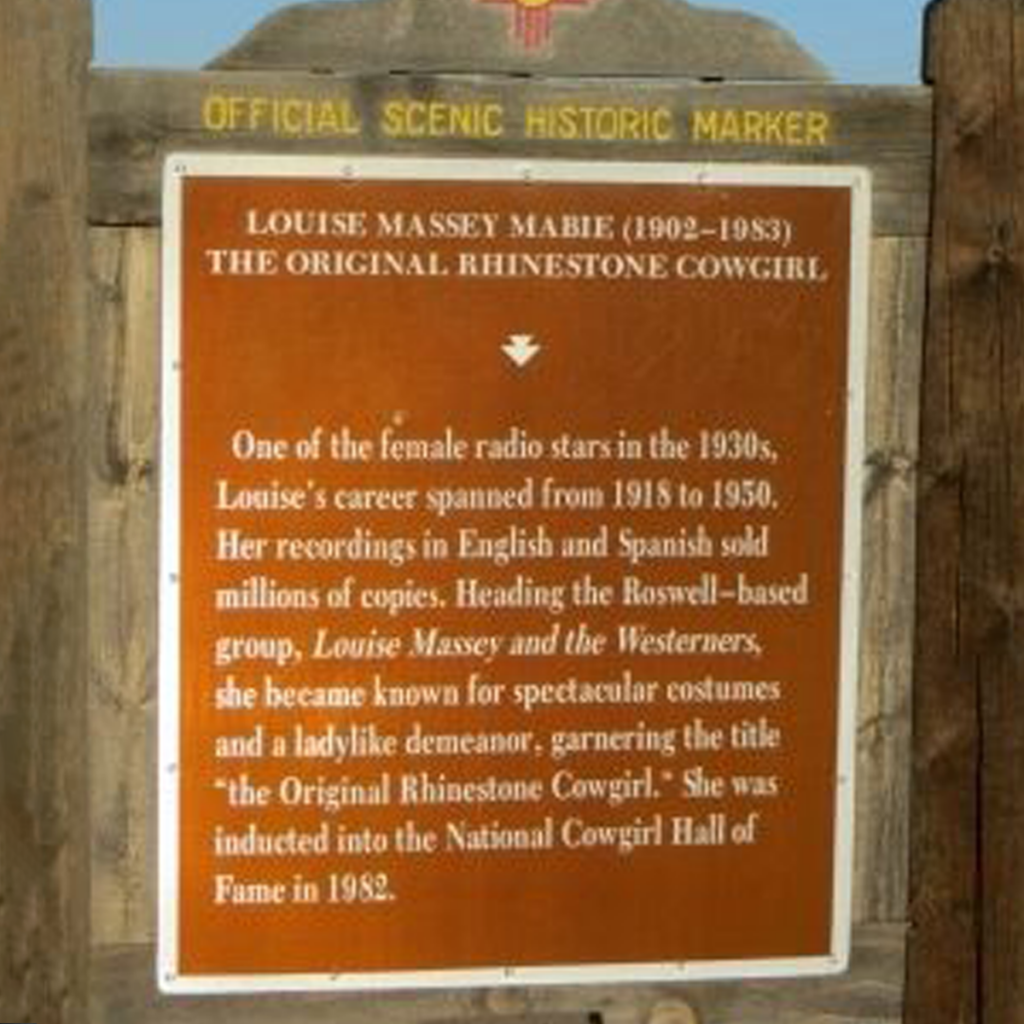Louise Massey Mabie.
Photo Credit: Courtesy of New Mexico Historic Women Marker Program. Courtesy of New Mexico Historic Women Marker Program.
Louise Massey Mabie
1902 - 1983
Chaves County
The “original rhinestone cowgirl,” she sold millions of records sung in both English and Spanish, and her song “My Adobe Hacienda” achieved the distinction of being listed on both the hillbilly and the pop charts simultaneously—thus becoming one of the first “crossover” hits.
An early female country and western radio star in the 1930s, Louise Massey Mabie was born in Texas, made her career in Roswell, New Mexico, and finally settled in the Hondo Valley in New Mexico. Her career spanned more than thirty years, from 1918 until 1950. Her first band—which included her father, husband, and two brothers—began in 1918 and was based in Roswell. It was first called the Massey Family Band and, later, Louise Massey and the Westerners. They played local venues and toured in Texas. Eventually, the band successfully auditioned for a music show called “The Red Path Chautauqua,” which led to a two-year tour of the United States and Canada.
In 1930, the Westerners signed a five-year contract with CBS Radio in Kansas City, Missouri. Four years later, they recorded a hit song titled, “When the White Azaleas Start Blooming.” The recording sold three million copies. Other hit songs followed, including “South of the Border (Down Mexico Way)” and “My Adobe Hacienda.” The last recording was co-written by Louise and Lee Penny. It achieved the distinction of being listed on both the hillbilly and the pop charts simultaneously—thus becoming one of the first “crossover” hits.
Massey Mabie became a well-known country and western singer; and because of her spectacular costumes and presentation on stage, she became known as the “original rhinestone cowgirl.” Her success continued in 1938 when she recorded and sang for NBC programs in New York. She continued to sell millions of records that were sung both in English and Spanish.
She retired to the Hondo Valley in 1950, but her recordings lived on. In 1982, the year before her death, she was inducted into the National Cowgirl Hall of Fame.
Sources:
Mary A. Bufwack and Robert K. Oermann. Finding Her Voice: The Saga of Women in Country Music. New York: Crown, 1993.
Thompson, Roy and Fred Dellar. The Illustrated Encyclopedia of Country Music. New York: Harmony Books, 1977.
Vertical Files, Barker Texas History Center, University of Texas at Austin.
Directions:
Louise Massey Mabie
Chaves County
Artist | Public servant |
Statehood (1912 - present) | Territorial Period (1848 - 1912) |
Southeast









